
9 minute read
The Importance of Forest
Fiji’s birds have received remarkable legislative protection for nearly 100 years. Fiji’s Birds and Game Act 1923 afforded full protection for all of the country’s native birds while specifying which species were not protected (certain introduced birds and certain pigeons during the annual onemonth shooting season).
Advertisement
Such national inclusive lists of protected species were a rarity until well into the last quarter of the 20th century. Until then, and for many countries still today, only named birds were protected, all others being unprotected. An inclusive list, such as Fiji has had since 1923, is more comprehensive, easier to administer, and offers better protection for all birds within a country’s borders.
Sustainable natural resource use is the key to long-term national and landowner prosperity, as well as bird and other biodiversity protection. In general, what is good for people is good for birds. Sustainable resource use, clean air and clean water lead to a healthy environment for birds and people.
In recognition of this, sustainable natural resource use is incorporated as a key component of Fiji’s Environmental Management Act which came into force in 2007. Another important cornerstone of Fiji’s biodiversity conservation legislation is the Endangered and Protected Species Act (2003 and currently being amended), which provides administrative legislation for Fiji’s participation in CITES as well as protection for birds and other biodiversity.
The National Biodiversity Strategy and Action Plan is a responsive, regularly updated plan that identifies priorities and responsibilities. The department of the Environment is responsible for maintaining the plan with assistance from other relevant government departments and agencies, together with the various conservation organisations operating in Fiji.
Fiji is a signatory and has set up an active administration for implementing CITES – the Convention on International Trade in Endangered Species. EnvIronmEntAL mAnAgEmEnt Act 2005 (ExtrAct)
The purposes of this Act are:
To apply the principles of sustainable use and development of natural resources; and (a) the preservation of the coastal environment, margins of wetlands, lakes and rivers; (b) the protection of outstanding natural landscapes and natural features; (c) the protection of areas of significant indigenous vegetation and significant habitat of indigenous fauna; (d) the relationship of indigenous Fijians with their ancestral lands, waters, sites, sacred areas and other treasures; or (e) the protection of human life and health.
Left: tagimoucia medinella waterhouesi, the legendary forest blossom from taveuni © jörg Kretzschmar.
ErodIng nAturAL rESourcES Unsustainable resource use is still conspicuously practised in many sectors, none more so than in our rivers and streams with rock and gravel extraction, water abstraction and the blocking of migratory fish routes. Unsustainable resource use is also conspicuous in sloping-land agriculture, forest and mangrove conversion, plantation management, foreshore modification and mining. Wildfire continues to play a major role in the conversion of forest to degraded forest and grassland.
Birds are most severely impacted by the conversion of native forests, but our migrant shorebirds have limited feeding habitat and key sites such as the Suva Peninsula mudflats are threatened by Government-encouraged or approved development.
commonPLAcE unSuStAInABLE rESourcE uSE
gravel and river rock extraction © dick Watling.
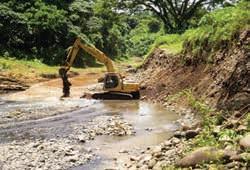
LOGGING PIC TO COME
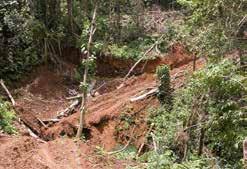
unsustainable logging practices threaten Fiji’s entire ecosystem © david Olson/Wildlife Conservation Society. unsustainable agriculture practices: ginger growing in the Waibau area, viti Levu © John Morrison.
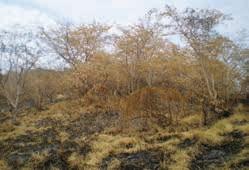
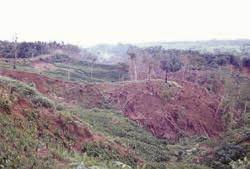
Forest destruction by wildfire © dick Watling.
hArvEStIng And ‘ShootIng’ Traditionally, Fijians and other Pacific Islanders have harvested eggs or nestlings from colonially nesting seabirds. This harvesting is likely to have resulted in the loss of certain birds that no longer nest in Fiji and the current rarity of some others. Over time, traditional controls were developed and would likely have assisted in a sustainable harvesting regime.
Today, colonially nesting seabirds are the most threatened group of our birds, primarily because traditional controls have been lost or are weakly followed. Further, the widespread acquisition
PIty thE Poor PIgEonS
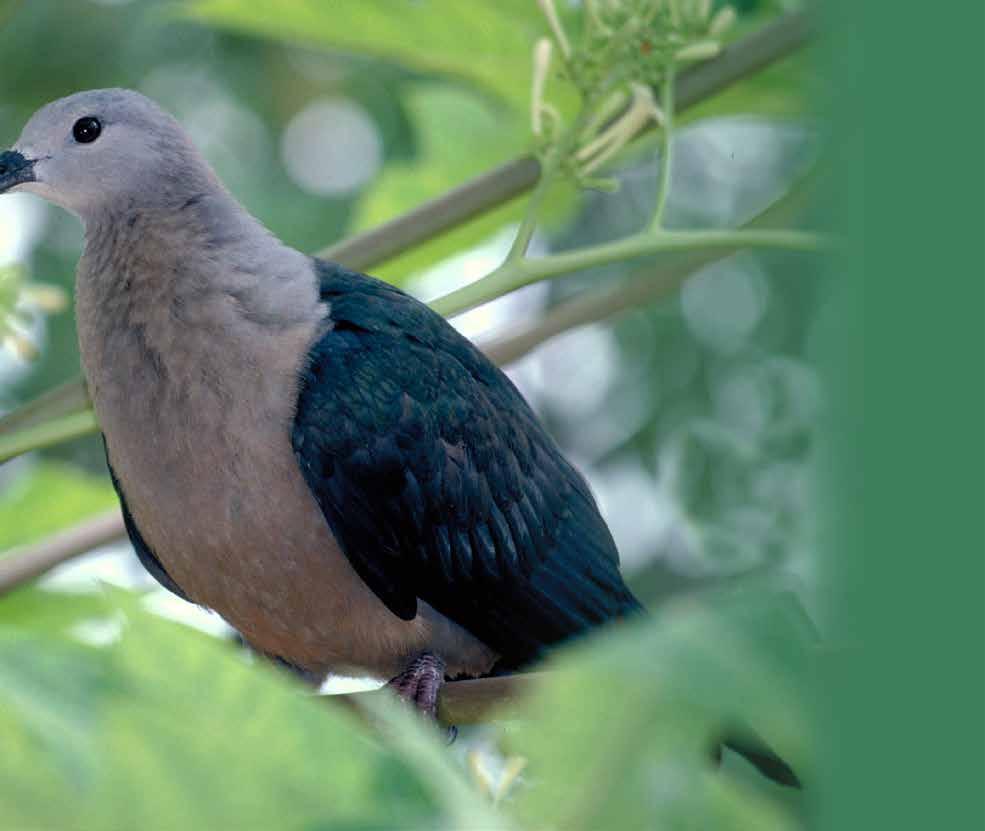
“The Minister of Agriculture may, each year, allow a shooting season of one month for the Fiji Wood Pigeon and the Chili Pigeon under the Birds and Game Protection Act 1923.” Unfortunately for all our pigeons, no Fijian or scientific names are used in the Act and neither of these pigeon names are in use in any authoritative book on Fijian birds or pigeons of the world.
Treaties and conventions to which Government is a signatory, require it to ensure than any ‘wildlife management’ such as pigeon shooting, be undertaken on a sustainable basis. of boats with outboard engines has meant that isolated islets where the seabirds breed are much more easily accessed.
With only one exception (the Fiji Petrel Kacaunigau), these threatened seabirds are found elsewhere in the Pacific or even in other oceans; as such their Fijian populations are not of major global interest and therefore their conservation attracts little attention. This is unfortunate because many of these birds are of great national interest and we should be identifying our national conservation priorities rather than blindly following global priorities.
To enable this requires clear identification of the birds concerned, research into pigeon ecology and population dynamics, and a regular monitoring system. All of this, together with the costs of shotgun control by the police, should be paid for by those who indulge in the archaic Pigeon Shooting Season, and not the ordinary taxpayer.
In recent years, Government has moved to replace or update much of Fiji’s archaic legislation. Fiji’s Pigeons are eagerly awaiting their turn.
Left: Fair game in the pigeon shooting season? A Fiji Wood Pigeon? A chilli Pigeon? neither; this is a Pacific Pigeon ducula pacifica – so is it protected? © Paddy Ryan
ClImaTE CHaNgE
There is much speculation on all aspects relating to climate change and its likely impacts on island people, their environments and biodiversity. As yet there has been no serious attempt to study climate change impacts on birds or biodiversity in Fiji. Elsewhere in the world however, bird studies are showing demonstrable impacts of climate
Several of Fiji’s most important colonial seabird nesting colonies such as Nukucikobia,
Naevo and Ha’atana, are on isolated lowlying islets that are no more than 3m above mean sea level. These may suffer increased inundation from storms affecting the nesting change. These include measurable effects on bird populations through mortality during severe weather events, changing sea temperatures, mis-timed insect emergence, decoupling of the breeding seasons of birds from those of their prey, and collapsing food-
cLImAtE chAngE vuLnErABLE: LoW-LyIng SEABIrd nEStIng coLonIES
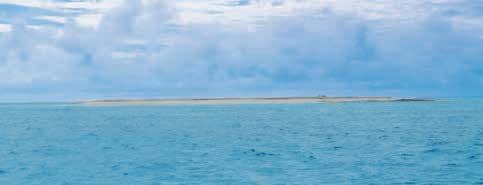
webs. birds, which may lead to their abandonment. Nukucikobia, N. Lau group, has at least seven species of nesting seabird including very rare nesters in Fiji, the Sooty Tern and the Masked Booby. Nukucikobia is also an important turtle-nesting site.
Above: nukucikobia sand cay © dick Watling. right: Sooty Shearwater Puffinus griseus © Jörg Kretzschmar. climate change vulnerable Low Altitude cloud Forest on gau Island, home of the Fiji Petrel © Eleazar O’Connor.
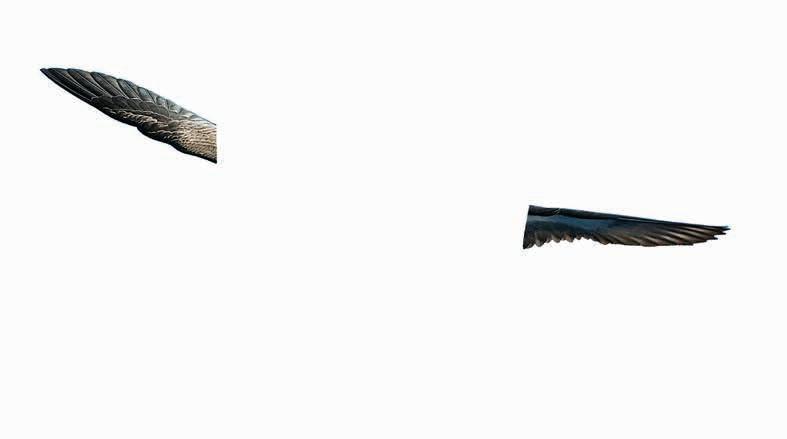
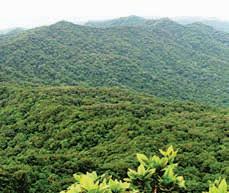
Climate change will likely impact birds and biodiversity by amplifying pressure of existing threats in indefinable ways. The problem with current approaches is they tend to ignore current threats and focus on ill-defined climate change issues per se. The pragmatic approach is to improve our capacity to address existing threats such as those identified in this document, and to improve our state of knowledge of all birds, especially our threatened and endemic species – those for which we alone are fully responsible.
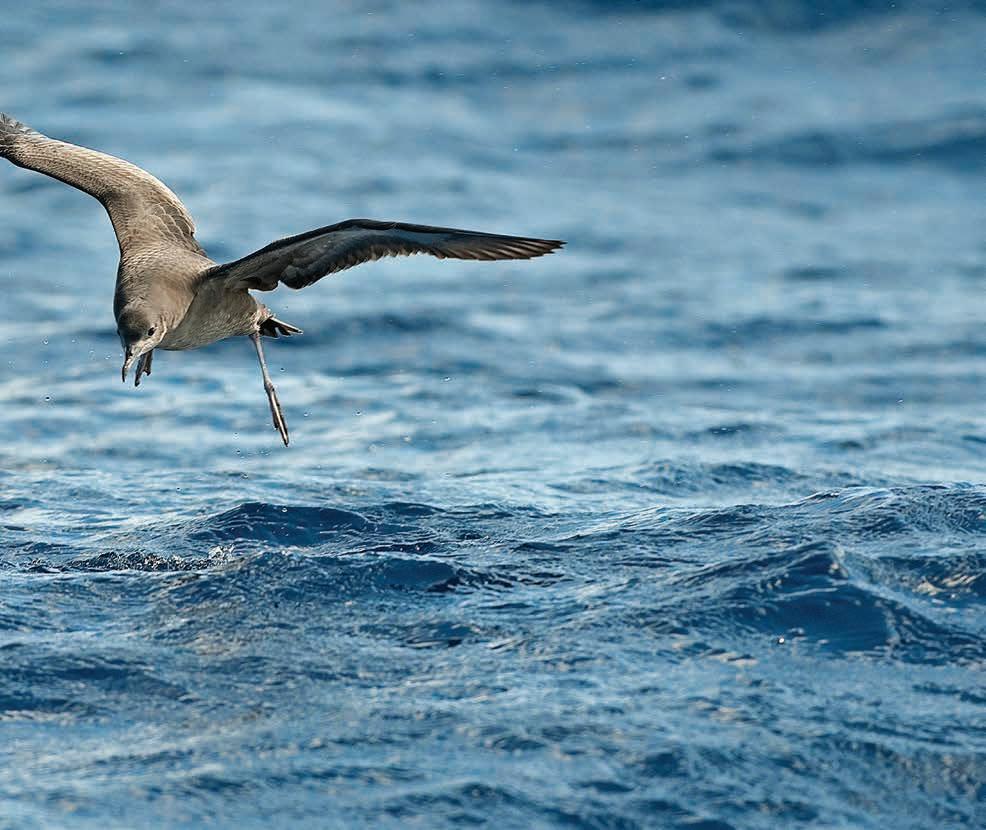
The small populations of some island birds, especially those restricted to a single island (of which we have seven in Fiji), make them particularly vulnerable to severe weather events or to marked changes in rainfall amount and distribution – two of the more widely predicted impacts of climate change. cLImAtE chAngE vuLnErABLE: LoW ALtItudE cLoud ForESt on gAu ISLAnd – homE oF thE FIjI PEtrEL
The Fiji Petrel nests only in the upland forests of Gau and scientists believe that it has a remnant distribution in the cool cloud forest on the highest forested ridges of an island that has some of the lowest altitude cloud forest found anywhere in the world (Watling & Gillison 1995). As such, it may be uniquely susceptible to climate change.
While the people of Fiji are unlikely to have any measurable effect on climate change, their response to the problem may have significant impacts on birds and biodiversity. Increased frequency of deliberately-lit wildfires could have a devastating effect on Fiji’s remaining forest and its endemic birds and biodiversity. Ill-considered foreshore development – including increasing numbers of badly-designed and constructed seawalls – could damage shorebird foraging areas.
Climate change is the subject of great bilateral and multilateral donor interest but Fiji’s birds and biodiversity, despite being of great value by international standards and a good indicator for biodiversity in general, have yet to be the subject of any resilience or adaptive strategy studies.
REFERENCES
Anderson, O., C. Small, J. Croxall, E. dunn, B. Sullivan, O. Yates, and A. Black. 2011. ‘Global seabird bycatch in longline fisheries.’ Endang Species Res.:14: 91–106. doi: 10.3354/esr00347
BirdLife International (2012) Country profile: Fiji. Available from: www.birdlife.org/datazone/ country/fiji
Lagataki, Samuela, Josua Wakolo, Akosita Lewai, Viliame Tupua, Luke delai, and Ilisaniasi Koroi. 2010. ‘Global Forest Resources Assessment 2010. Country Report. Fiji.’ In Global Forest Resources Assessment 2010, 47. Rome: Forestry department. Food and Agriculture Organisation of the United Nations.
Jackson, d.B. and R. Jit. 2007. ‘Population densities and detectability of 3 species of Fijian forest birds.’ Notornis 54: 99-111
Naikatini, A.N. 2009. Monitoring comparative spatial and temporal variation in the landbirds of Vago-Savura Forest Reserve, a native lowland rainforest in south-east Viti Levu, Fiji. MSc. Thesis, University of the South Pacific, Suva.
Masibalavu, V. & G.dutson 2006. Important Bird Areas in Fiji: Conserving Fiji’s Natural Heritage. BirdLife International, Suva, Fiji. Morrison, C. 2003a. A Field Guide to the Herpetofauna of Fiji. Institute of Applied Sciences, The University of the South Pacific, Suva.
Tabudravu, Mere S.V. 2009. Spatial relationships between forest birds and habitats in degraded and nondegraded forests in IBA FJ 10. MSc. Thesis, University of the South Pacific, Suva.
Watling, d. (2001) Guide to the Birds of Fiji & Western Polynesia. Environment Consultants Fiji, Suva.
Watling, d. and A.N. Gillison. 1995 Endangered Species in Low Elevation Cloud Forest on Gau Island, Fiji. In Hamilton, L.S., J.O. Juvik and F.N. Scatena (Eds). Tropical Montane Cloud Forests. Ecological Studies, Vol. 110 Springer-Verlag.
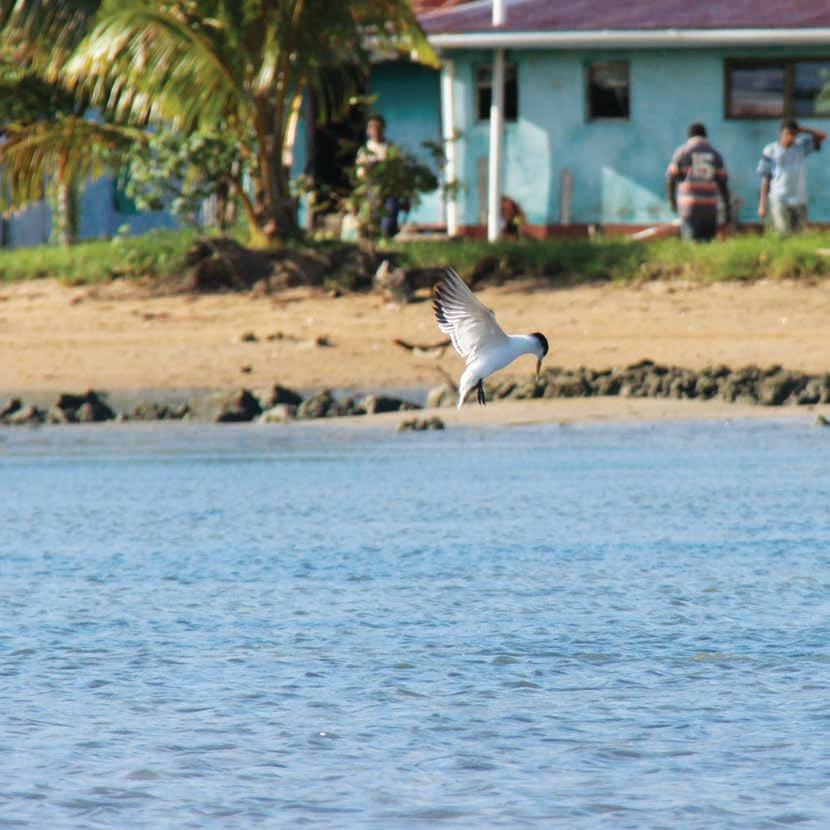
White, C.M., d.J. Brimm & J.H. Wetton 2000. ‘The Peregrine Falcon Falco peregrinus in Fiji and Vanuatu.’ Chancellor, R.d. & B.U. Meyburg (eds). Raptors at Risk. WWGBP/Hancock House.





